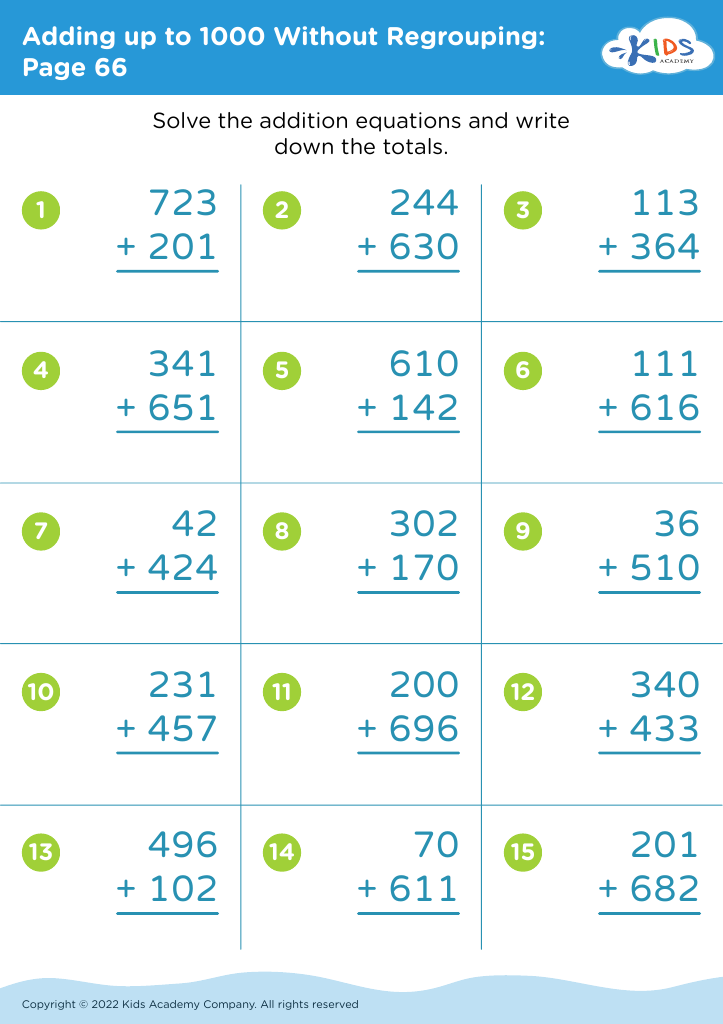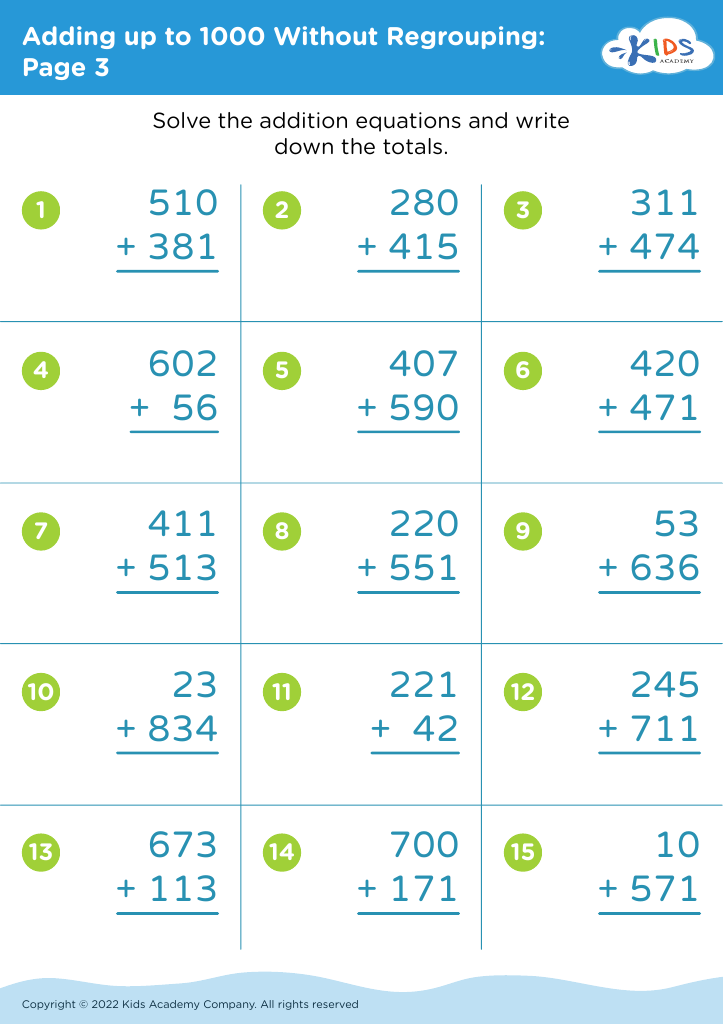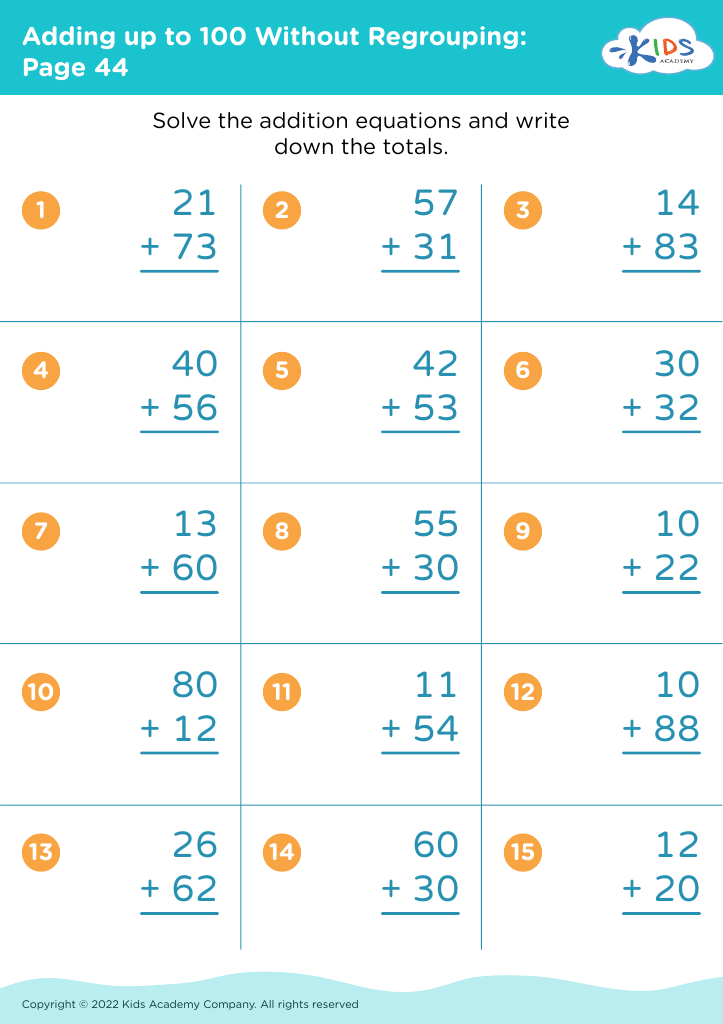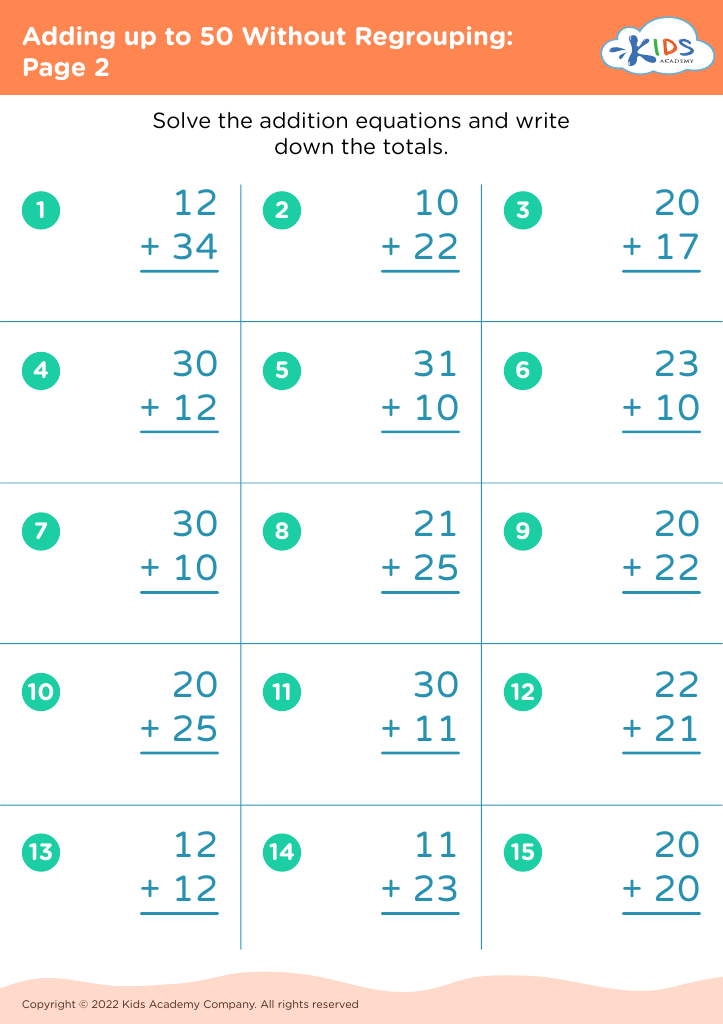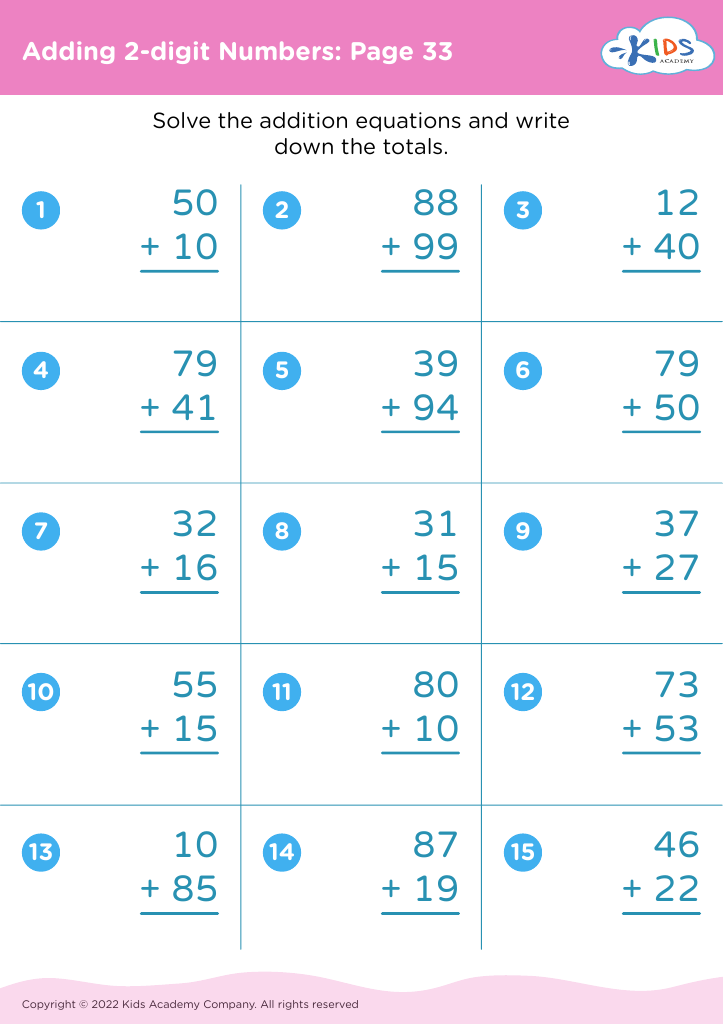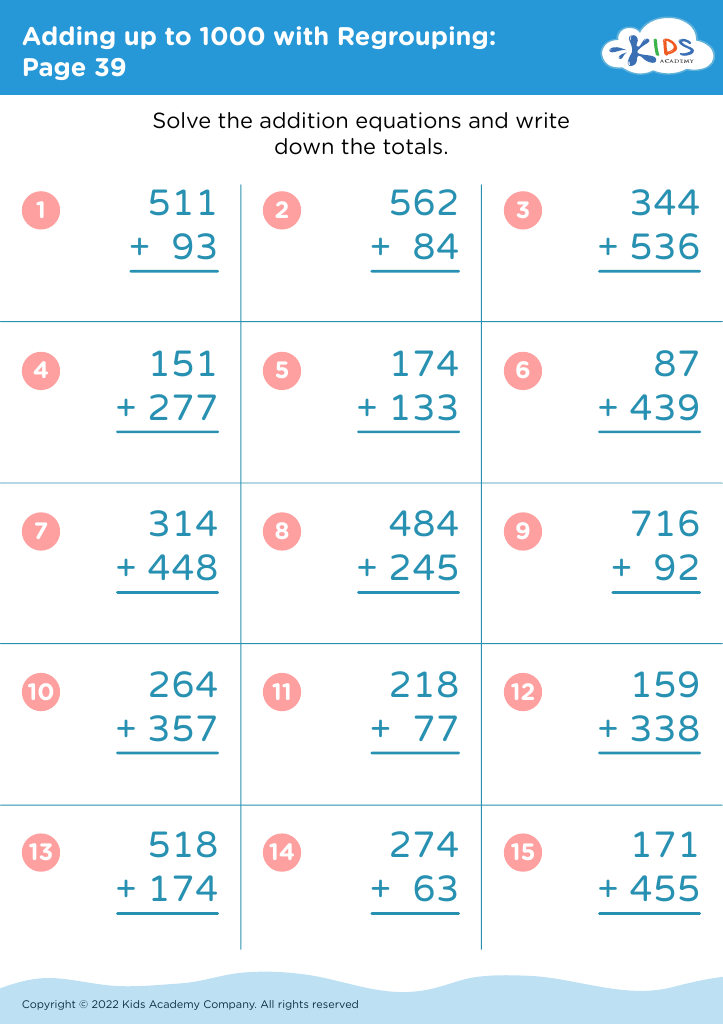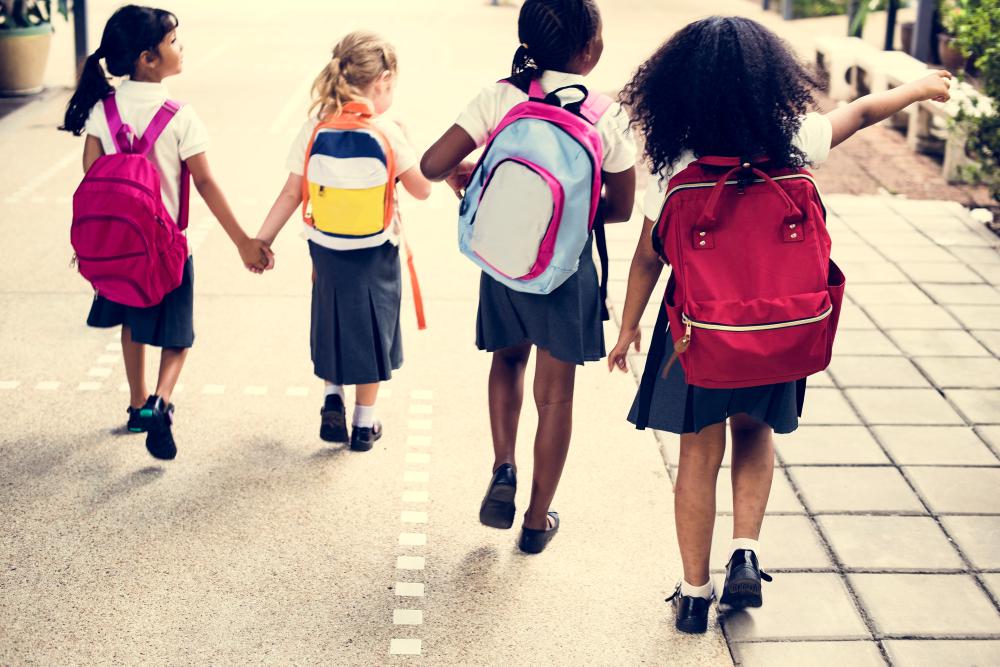Understand patterns Math Worksheets for Ages 3-7
6 filtered results
-
From - To
Unlock the magic of patterns with our "Understand Patterns Math Worksheets for Ages 3-7"! Tailored for young learners, these engaging and educational worksheets help children develop critical thinking and problem-solving skills. Through colorful visuals and fun activities, kids learn to recognize, replicate, and create patterns, laying a strong foundation in early math concepts. Ideal for parents and educators, our printable worksheets are designed to captivate and educate, making learning an exciting adventure. Embrace the journey of discovery and watch your child’s confidence and curiosity flourish with each completed pattern activity!
Understanding patterns is a fundamental concept in early math education and plays a crucial role in the cognitive and academic development of children aged 3-7. At this critical stage, young learners are just beginning to grasp various forms of logic and sequencing, and patterns help build these foundational skills. Recognizing and creating patterns bolster a child’s ability to predict and talk about what comes next, thereby enhancing their problem-solving skills and logical thinking.
For parents and teachers, integrating patterns into daily learning can provide multiple benefits. For one, it cultivates an early interest in math, laying down the necessary groundwork for more complex concepts like addition, multiplication, and algebra. Patterns also aid in the development of critical observational skills and attention to detail, which are essential not just in math, but across all areas of learning. Additionally, engaging with patterns can improve memory and sequencing skills, which benefit reading and writing.
Encouraging children to recognize, reproduce, extend, and create patterns must be a fun and interactive aspect of their learning. Materials like colored blocks, beads, or even rhythmic clapping games can be employed to make pattern recognition an enjoyable experience. By prioritizing pattern understanding, parents and teachers set the stage for overall intellectual growth and a positive attitude towards lifelong learning.
